Imagine standing at the highest peak in the world, surrounded by breathtaking snow-capped peaks and a serene, otherworldly beauty. Nepal, a land filled with mystical charm and unparalleled natural wonders, is home to one of the world’s most iconic destinations – the top mountain in Nepal.
Majestic and awe-inspiring, this mountain stands as a testament to the incredible forces and remarkable landscapes that nature can create.
In this article, we will uncover the identity of this extraordinary mountain that has captured the hearts of adventure seekers and mountaineers from across the globe. Prepare to be amazed by the sheer magnificence of the top mountain in Nepal.
Top Mountains in Nepal
Nepal, the land of the Himalayas, is home to some of the highest peaks in the world. These majestic mountains not only attract mountaineers and adventurers from all corners of the globe but also hold immense cultural and spiritual significance for the people of Nepal. In this article, we will explore the top mountains in Nepal, their locations, heights, climbing routes, significance, and the challenges they pose.
Mount Everest

Location
Mount Everest, the highest peak in the world, is located on the border between Nepal and Tibet, in the Mahalangur Himal range of the Himalayas.
Height
Standing tall at an astonishing height of 8,848.86 meters (29,031.7 feet), Mount Everest holds the prestigious title of the world’s highest mountain.
Climbing Routes
Mount Everest offers several climbing routes, the most popular being the South Col Route from the Nepalese side via the Southeast Ridge. Another prominent route is the North Col Route from the Tibetan side via the Northeast Ridge.
Significance
The significance of Mount Everest goes beyond its sheer height. It is revered as the ultimate challenge for mountaineers and symbolizes the human spirit of perseverance and adventure. Scaling this mighty mountain has been the lifelong dream of many climbers, pushing their physical and mental limits.
Challenges
Climbing Mount Everest is no easy feat. The extreme altitude, harsh weather conditions, and challenging terrain make it a dangerous undertaking. Climbers face risks such as altitude sickness, avalanches, and unpredictable weather. The scarcity of oxygen at high altitudes poses additional challenges, requiring climbers to be well-prepared and have proper acclimatization.
Kangchenjunga
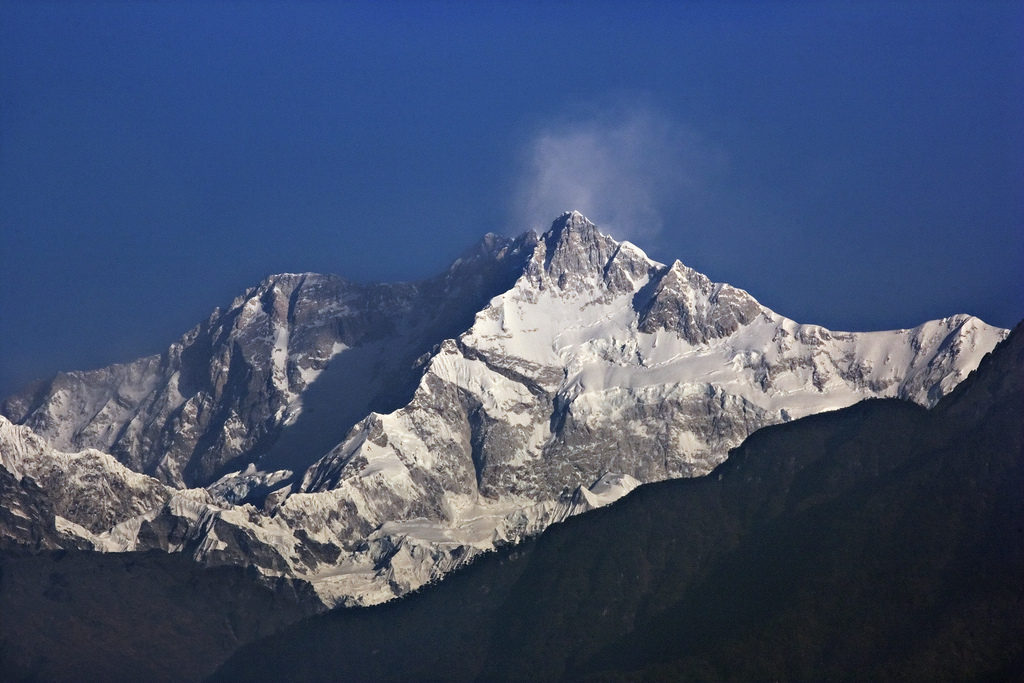
Location
Kangchenjunga, the third highest mountain in the world, is situated in eastern Nepal on the border with India, in the Great Himalayan range.
Height
Standing proudly at 8,586 meters (28,169 feet), Kangchenjunga commands attention with its breathtaking beauty.
Climbing Routes
Kangchenjunga offers several routes for climbers, with the South Face being the most popular. This route presents a formidable challenge due to its steepness and technical difficulties.
Significance
Kangchenjunga holds immense cultural significance for the people of Nepal and Sikkim, India. The mountain is considered sacred, and its name translates to “Five Treasures of Snow,” representing the five peaks that make up Kangchenjunga.
Challenges
The treacherous climbing conditions on Kangchenjunga make it a formidable challenge for mountaineers. The weather can be highly unpredictable, with severe winds and intense cold. The steep and icy sections of the mountain demand advanced climbing skills and experience.
Lhotse
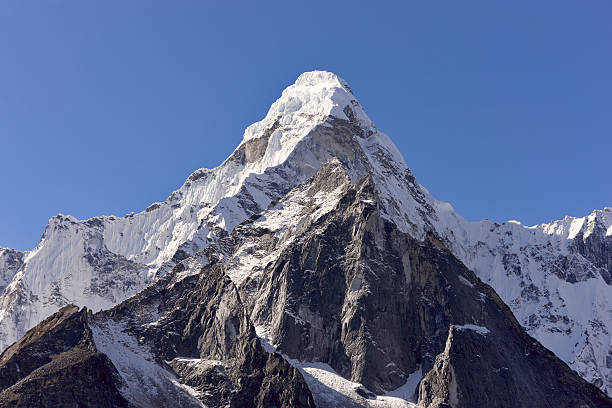
Location
Lhotse, the fourth highest mountain in the world, sits just south of Mount Everest, sharing its location on the border between Nepal and Tibet.
Height
Reaching a soaring height of 8,516 meters (27,940 feet), Lhotse showcases its majestic presence alongside its neighboring giant, Mount Everest.
Climbing Routes
The most common climbing route on Lhotse is via the South Col Route from the Nepalese side, which shares a section with the Everest route. This requires climbers to traverse the treacherous Khumbu Icefall.
Significance
Lhotse is highly significant for mountaineers seeking to conquer the world’s highest peaks. It is often considered a training ground for those aspiring to summit Mount Everest, as the two mountains are closely connected.
Challenges
Climbing Lhotse presents numerous challenges, including the risks associated with altitude sickness, severe weather conditions, and the technical difficulties of climbing the steep sections. The climbers must navigate through treacherous icefalls and crevasses, making it a demanding and potentially dangerous expedition.
Makalu
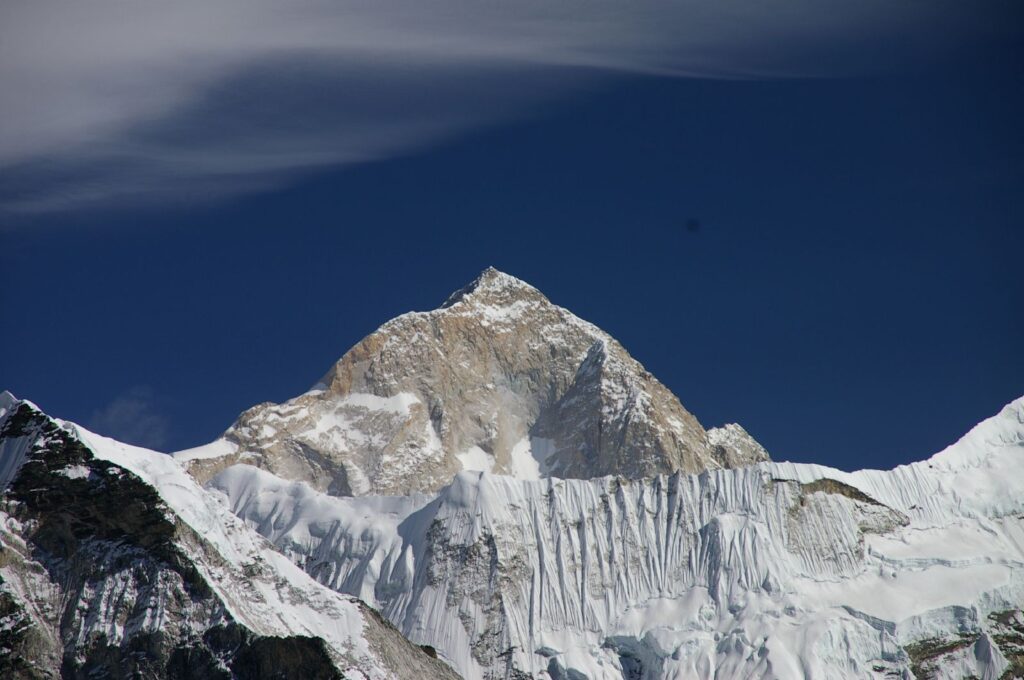
Location
Makalu, the fifth highest mountain globally, is located in the Mahalangur Himalayas, southeast of Mount Everest on the Nepal-Tibet border.
Height
Gracefully towering at a height of 8,485 meters (27,838 feet), Makalu showcases its majestic beauty alongside the giants of the Himalayas.
Climbing Routes
The most common climbing route on Makalu is via the Northeast Ridge from the Nepalese side. This route poses various technical challenges, including steep snow and ice sections.
Significance
Makalu holds great significance not only for mountaineers but also for the local communities living in its vicinity. It is considered a sacred mountain and is an integral part of the religious and cultural beliefs of the people of Nepal.
Challenges
Climbing Makalu requires mountaineers to overcome a myriad of challenges. The ascent involves navigating through challenging terrain, including steep ridges, icy slopes, and rock faces. Additionally, climbers face harsh weather conditions, including freezing temperatures and hurricane-strength winds.
Cho Oyu
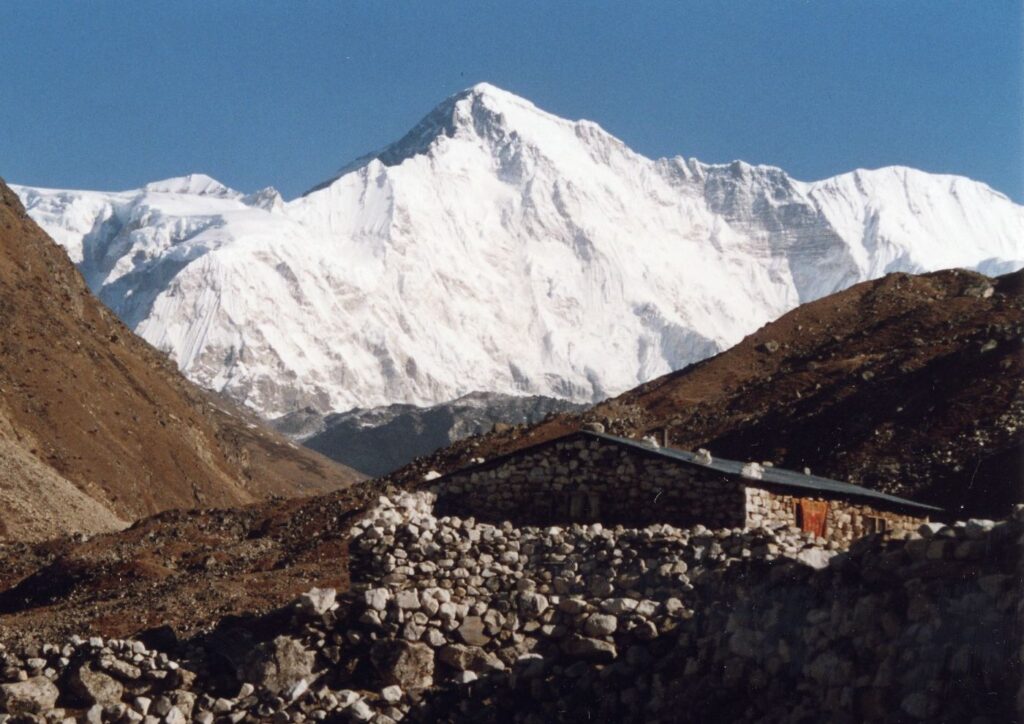
Location
Cho Oyu, the sixth highest mountain in the world, is situated on the border between Nepal and Tibet, in the Khumbu Himal range.
Height
Reaching a remarkable height of 8,188 meters (26,864 feet), Cho Oyu stands as a prominent peak in the Himalayan skyline.
Climbing Routes
The most popular and frequently climbed route on Cho Oyu is via the Northwest Ridge, which requires mountaineers to traverse a steep face known as “the Lhotse Face.”
Significance
Cho Oyu holds great significance for mountaineers, as it is a prized achievement in the pursuit of climbing the world’s eight-thousanders. It is also considered a training ground for scaling higher peaks.
Challenges
Climbing Cho Oyu presents various challenges, including icy slopes, crevasses, and unpredictable weather conditions. The climbers must overcome physical and mental exhaustion as they ascend towards the summit, making it a strenuous and demanding expedition.
Dhaulagiri I
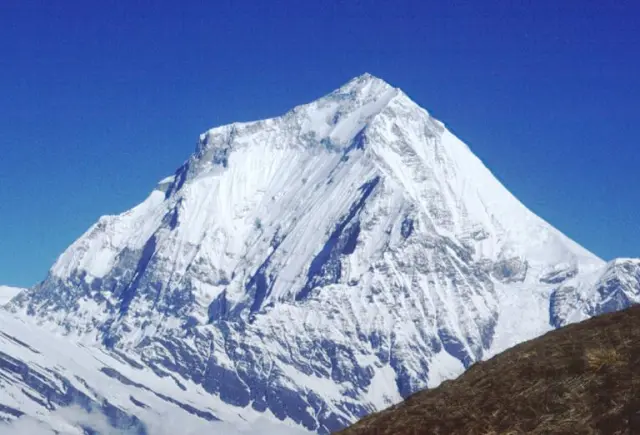
Location
Dhaulagiri I, the seventh highest mountain globally, is located in the Dhaulagiri Himal range, northwest of Pokhara in western Nepal.
Height
Standing tall at an impressive height of 8,167 meters (26,795 feet), Dhaulagiri I showcases its majestic grandeur alongside the other towering peaks of the region.
Climbing Routes
There are multiple climbing routes available on Dhaulagiri I, with the Northeast Ridge being the most popular, accessible from the Nepalese side. This route requires climbers to navigate steep and exposed sections with technical difficulties.
Significance
Dhaulagiri I holds immense significance for mountaineers and adventure enthusiasts. Its challenging terrain and remote location make it an enticing expedition for those seeking a greater level of adventure and solitude.
Challenges
Climbing Dhaulagiri I poses various challenges, including traversing through rugged glaciers, icefalls, and avalanche-prone slopes. The climbers must be prepared for extreme temperatures, high-altitude sickness, and fatigue, making it a demanding and physically taxing climb.
Manaslu
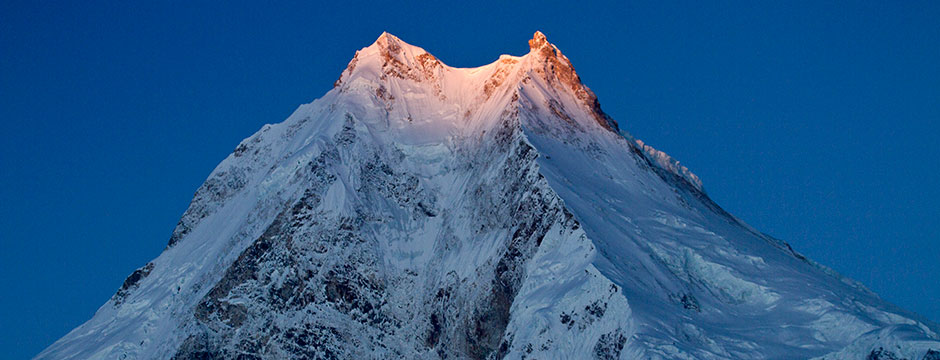
Location
Manaslu, the eighth highest mountain globally, is located in the Mansiri Himal range, part of the Nepalese Himalayas.
Height
Reaching an impressive height of 8,163 meters (26,781 feet), Manaslu showcases its awe-inspiring presence in the Nepalese landscape.
Climbing Routes
The most commonly used route for climbing Manaslu is via the Northeast Face, which poses various technical challenges such as icefalls and steep ridges.
Significance
Manaslu holds cultural and spiritual significance as well. It is considered sacred by the local communities, and climbing the mountain requires a special permit and adherence to certain customs and practices.
Challenges
Climbing Manaslu presents a range of challenges, including treacherous icefalls, deep crevasses, and unstable weather conditions. The climbers must navigate through steep and exposed sections, requiring excellent technical skills and physical endurance.
Annapurna I
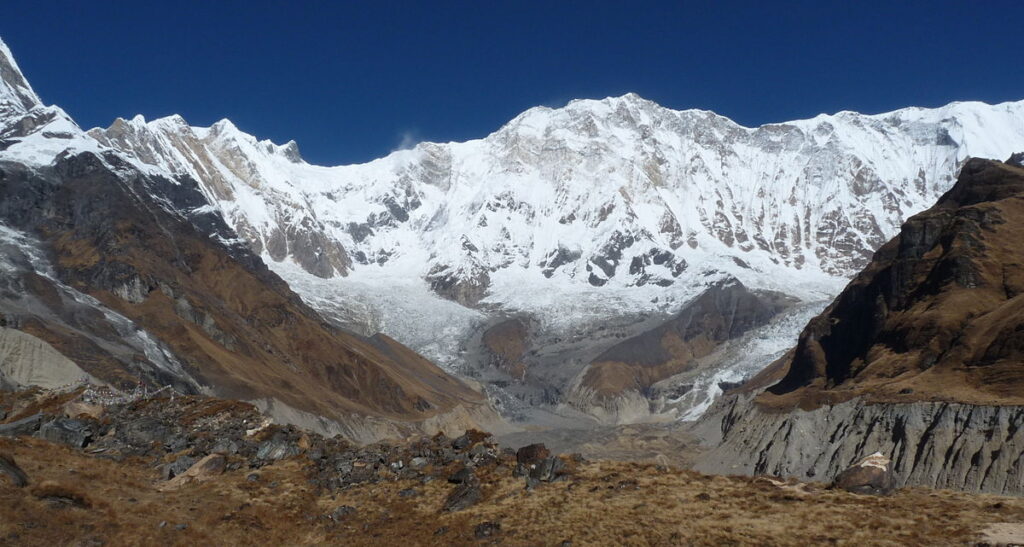
Location
Annapurna I, the tenth highest mountain globally, is situated in central Nepal, in the Annapurna Himal range.
Height
Reaching a staggering height of 8,091 meters (26,545 feet), Annapurna I stands tall as a well-known peak in the Annapurna region.
Climbing Routes
There are different climbing routes available on Annapurna I, with the South Face Route being the most popular. This route demands advanced climbing skills and involves navigating through icy couloirs and steep rock faces.
Significance
Annapurna I is highly renowned among mountaineers. It was the first eight-thousander to be climbed, attracting adventurers from around the world. The Annapurna region surrounding the mountain is also known for its stunning natural beauty and trekking trails.
Challenges
Climbing Annapurna I is notoriously challenging and dangerous. The mountain is known for its high fatality rate, earning it the nickname “the killer mountain.” Climbers face risks such as frequent avalanches, severe weather conditions, and a technically demanding ascent.
Lhotse II
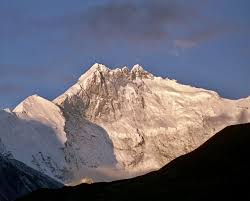
Location
Lhotse II, also known as Lhotse Shar, is a subsidiary peak of Lhotse and is situated on the border between Nepal and Tibet.
Height
Standing at an impressive height of 8,501 meters (27,890 feet), Lhotse II showcases its formidable presence alongside its parent peak, Lhotse.
Climbing Routes
The most common route to climb Lhotse II is via the South Face, which shares a section with the Lhotse climbing route. This involves traversing glaciers and steep sections.
Significance
Lhotse II holds significance primarily for climbers attempting to conquer Lhotse or Everest. It presents an additional challenge for those seeking to summit multiple peaks in the region.
Challenges
Climbing Lhotse II poses similar challenges to its parent peak, Lhotse, including altitude sickness, extreme weather conditions, and technical difficulties. The climbers must possess advanced mountaineering skills and experience to safely navigate their way to the summit.
In conclusion, Nepal offers an unparalleled array of majestic mountains, each with its own unique characteristics, challenges, and significance. Scaling these peaks is not only a test of physical endurance but also a spiritual journey, immersing oneself in the breathtaking beauty and rich cultural heritage of the Himalayas. Whether it is the mighty Mount Everest or the awe-inspiring Annapurna, Nepal’s mountains continue to captivate the hearts and minds of adventurers from around the world, beckoning them to conquer new heights.
